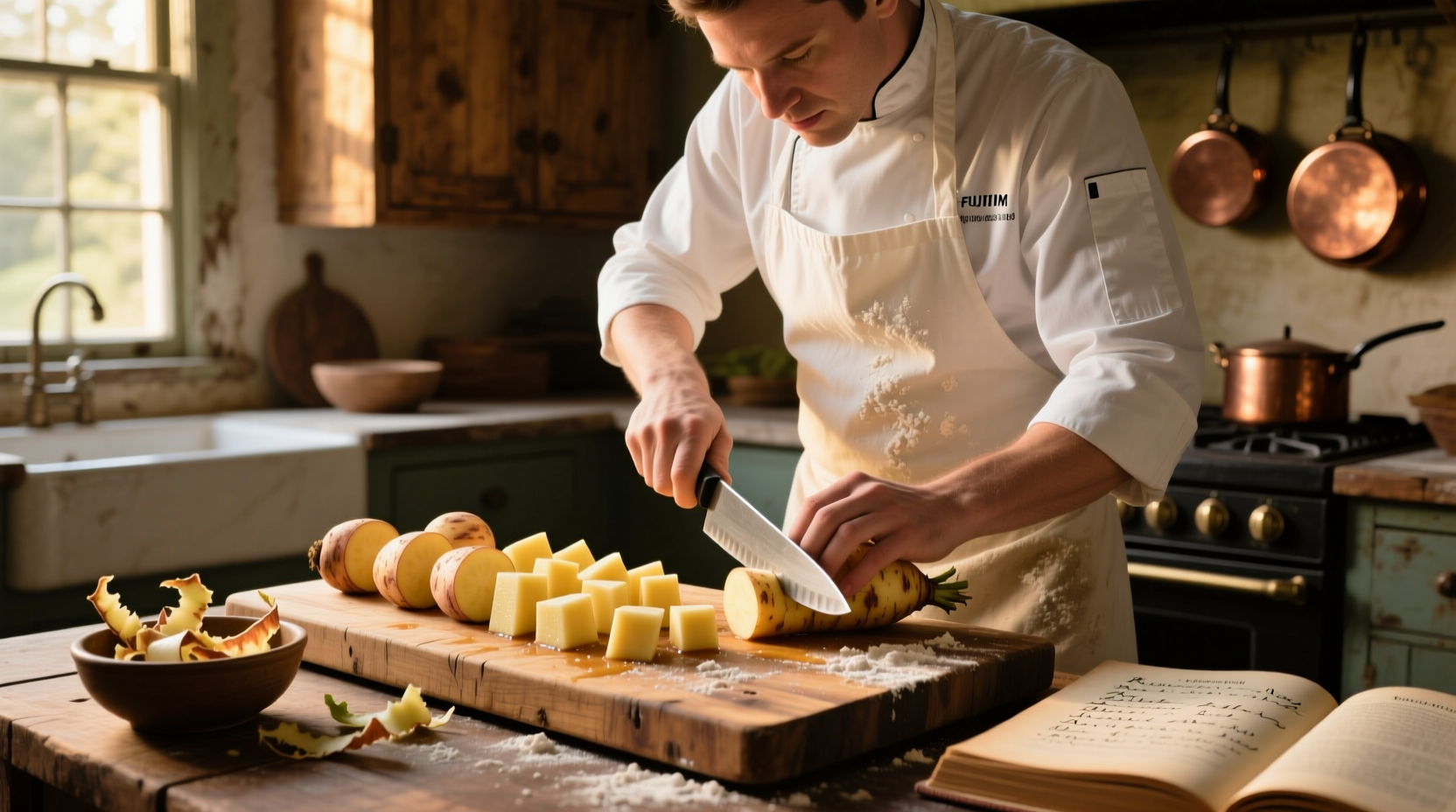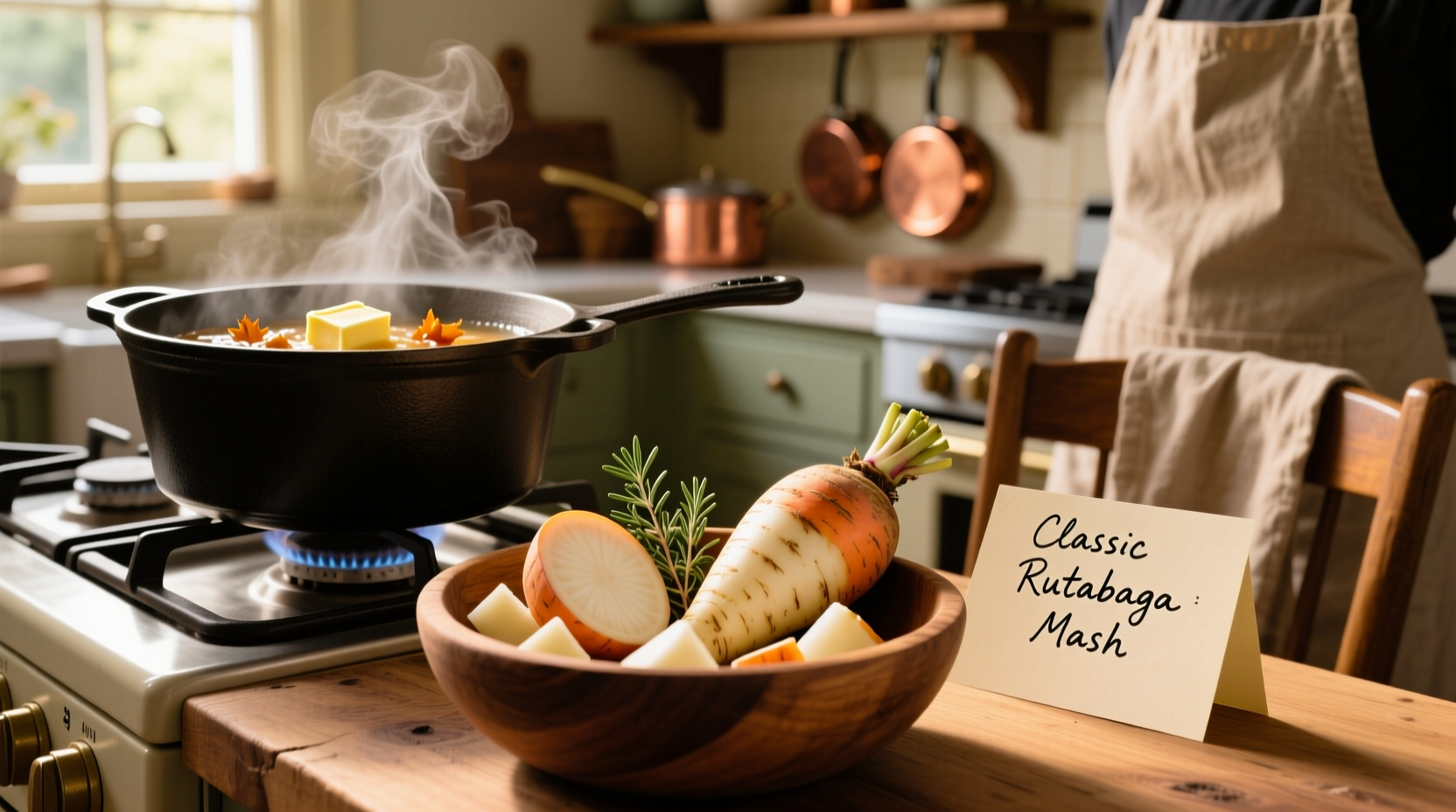Many home cooks struggle with rutabagas, mistakenly treating them like potatoes. But this underrated root vegetable requires specific preparation to unlock its sweet, nutty potential. As a chef who's worked with root vegetables across Michelin-starred kitchens and home cooking environments, I've perfected methods that consistently deliver tender, flavorful results without bitterness or mushiness.
Understanding Rutabaga: Your Starting Point
Rutabagas (Brassica napus) are hybrid vegetables resulting from cross-pollination between cabbage and turnips. Unlike their turnip cousins, rutabagas feature yellow flesh beneath a purple-tinged skin and develop a sweeter flavor when cooked properly. The USDA National Nutrient Database confirms rutabagas provide 35mg of vitamin C per 100g serving—more than half your daily requirement—plus significant potassium and dietary fiber.
When selecting rutabagas, choose firm specimens weighing 2-3 pounds with smooth skin free of cracks or soft spots. Avoid those with green sprouts emerging from the crown, which indicates age and potential bitterness. Properly stored in a cool, dark place with ventilation, rutabagas maintain quality for up to four weeks according to Cornell University's Food Science Department.
Essential Preparation Techniques
Peeling rutabagas requires more effort than most root vegetables due to their thick, waxy skin. Use a sharp chef's knife rather than a vegetable peeler for best results:
- Trim both ends with a sharp knife
- Stand upright on a stable cutting board
- Carefully remove skin in downward strokes following the vegetable's curve
- Cut into uniform 1-inch cubes for even cooking
Safety tip: Place a damp towel beneath your cutting board to prevent slipping during the peeling process. This simple technique prevents many kitchen accidents when working with dense root vegetables.

Four Foolproof Cooking Methods Compared
| Cooking Method | Time Required | Texture Result | Best For |
|---|---|---|---|
| Boiling | 35-40 minutes | Soft, creamy | Mashing, soups |
| Roasting | 40-45 minutes | Crisp exterior, tender interior | Side dishes, meal prep |
| Steaming | 25-30 minutes | Firm yet tender | Nutrient preservation |
| Air Frying | 20-25 minutes | Crispy edges, soft center | Rutabaga fries alternative |
Boiling: The Foundation Method
Boiling remains the most accessible cooking method for beginners. Place cubed rutabaga in cold salted water (1 tablespoon salt per quart), bring to a gentle boil, then reduce to simmer. Cook uncovered for 35-40 minutes until fork-tender. Drain thoroughly before mashing or incorporating into other dishes.
Pro tip: Add a peeled potato to the pot when boiling rutabaga. The potato's starch helps prevent rutabaga's natural bitterness while maintaining its distinctive flavor profile. This technique, documented in the University of Maine's Cooperative Extension food preservation guide, creates a more balanced final product.
Roasting: Unlocking Natural Sweetness
Roasting caramelizes rutabaga's natural sugars for deeper flavor. Toss cubed rutabaga with 1-2 tablespoons olive oil, salt, and your choice of herbs. Spread in a single layer on a parchment-lined baking sheet. Roast at 400°F for 40-45 minutes, flipping halfway through, until golden brown and tender.
For optimal browning, avoid overcrowding the pan—this prevents steaming and ensures proper caramelization. The FDA's food safety guidelines recommend cooking root vegetables to an internal temperature of 185°F to ensure safety while maintaining texture.
Flavor Pairing Principles
Rutabaga's earthy-sweet profile pairs beautifully with specific ingredients. Understanding these combinations transforms basic preparations into restaurant-quality dishes:
- Savory approach: Rosemary, thyme, garlic, and a touch of Dijon mustard
- Sweet approach: Maple syrup, cinnamon, and toasted pecans
- International twist: Cumin and coriander for Middle Eastern flair
When adding dairy to mashed rutabaga, warm milk or cream before incorporating to prevent temperature shock that can make the mash gluey. Professional kitchens follow this technique to maintain perfect texture in root vegetable purees.
Troubleshooting Common Problems
Even experienced cooks encounter issues with rutabagas. Here's how to solve the most frequent problems:
- Mushy texture: Overcooking is the primary culprit. Test rutabaga cubes with a fork starting at 30 minutes when boiling.
- Bitterness: Older rutabagas develop bitter compounds. Peel thicker and add a pinch of sugar to boiling water.
- Dry roasted pieces: Toss rutabaga in oil thoroughly and avoid roasting at temperatures above 425°F.
- Uneven cooking: Cut pieces to uniform 1-inch size—this simple step prevents some pieces from turning to mush while others remain hard.
Three Simple Rutabaga Recipes to Try
Creamy Herb Rutabaga Mash
Boil 2 pounds cubed rutabaga until tender. Drain thoroughly. In a saucepan, warm 1/2 cup milk, 2 tablespoons butter, 1 tablespoon chopped fresh thyme, and 1 minced garlic clove. Mash rutabaga with warm dairy mixture until smooth. Season with salt and white pepper. Serves 4 as a side dish.
Honey-Roasted Rutabaga Wedges
Cut rutabaga into 1/2-inch wedges. Toss with 2 tablespoons olive oil, 1 tablespoon honey, 1 teaspoon smoked paprika, and salt. Arrange on baking sheet and roast at 400°F for 35-40 minutes until caramelized. Garnish with fresh parsley before serving.
Rutabaga and Apple Soup
Sauté 1 diced onion in 2 tablespoons butter until translucent. Add 2 pounds cubed rutabaga, 1 diced apple, 4 cups vegetable broth, and 1 teaspoon caraway seeds. Simmer 25 minutes until tender. Blend until smooth. Stir in 1/2 cup cream and season to taste.
Storage and Meal Prep Tips
Cooked rutabaga maintains quality for 4-5 days when stored in an airtight container in the refrigerator. For longer storage, freeze cooked rutabaga in portion-sized containers for up to 3 months. Thaw overnight in the refrigerator before reheating.
When meal prepping, roast rutabaga in large batches and use throughout the week in different applications—toss with greens for salads, add to grain bowls, or puree for quick side dishes. This approach maximizes efficiency while enjoying rutabaga's versatility.











 浙公网安备
33010002000092号
浙公网安备
33010002000092号 浙B2-20120091-4
浙B2-20120091-4